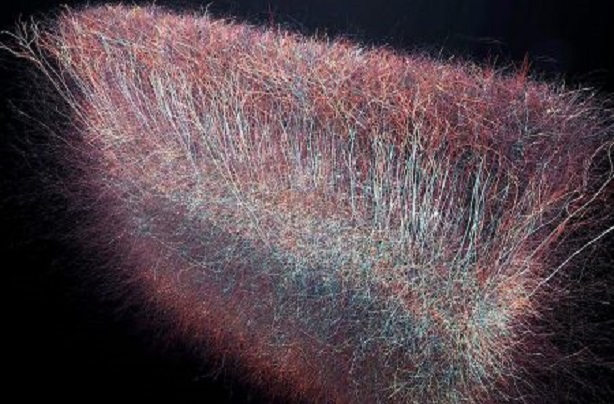Scientists Have Found A Multidimensional Universe Inside Your Brain
The Blue Brain Project came up with a model which describes the brain as a component of complex multi-dimensional spaces and constructions. A new study is close to find the answer to understand the working of the brain better than before, as it brings the brain closer to the structure of very complex spaces. This study can give us answers to our questions as where in our mind are the memories made, and other deer philosophical questions.

The human brain is a very complex organ and the science is far from understanding it completely. A team of scientists that are working on The Blue Brain Project are inventing new ways of understanding the brain using different methods and new computer models. The most recent model has shown the brain to be a structure of multi-dimensional spaces and constructions.
“We found a world that we had never imagined,” said neuroscientist Henry Markram, director of Blue Brain Project and professor at the EPFL in Lausanne, Switzerland.
These structures exist in huge numbers that are innumerable, up to the seventh dimension in the tiniest part of the brain. In some parts of the neural network, there were structures present as high as the eleventh dimension. These structures were formed together as a form of “clique” in order to work together, and each neuron connects to other one to form a structure. As many neurons consists the brain, so does the number of structures.
As Professor Cees van Leeuwen puts it, “multi-dimensions are also used to describe highly functional constructions or systems outside of physics”. Professor Leeuwen is a reviewer of the followed study and states that an example of such structure is an example of such a structure is the state of systems in state space.
With an organ like the brain, with such complexity with its connections and secretive working, the researchers compare it to objects they feel comfortable with in order to understand it better and create new discoveries. Ran Levi of Aberdeen University points out that that without the comparison, you would only see a collection of trees, or neurons working randomly.
A certain method called “algebraic topology” was applied to the model in a virtual structure of a brain. This structure was made on a computer and the experiments that were made were conducted on live brain tissue to see the effects. When a stimulus was activated, the brain formed higher dimensions of cliques with spaces or cavities between them.
Levi states that “This activity of forming high-dimensional holes in the brain tissue when the brain was working on processing data means that the neurons were reacting to the stimulus in a highly defined manner. The brain appears to construct and demolish structures of multi-dimensional units in response to the stimuli, going progressively from simple structures of 1D (imagine rods) to 2D to 3D to more and more complex structures of higher dimensions of up to 7D (imagine multi-storey buildings).This progression is comparable to sandcastles of multiple levels and outcroppings, only for it to fall apart at the next wave.”
The next part of this research is going to focus on the practical role of the constructions that are occurring in the brain. Maybe the secret hides in the cavities that lie between them.
